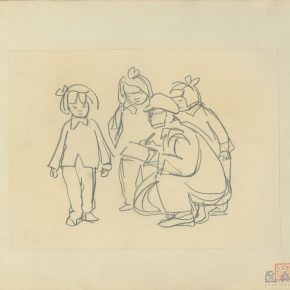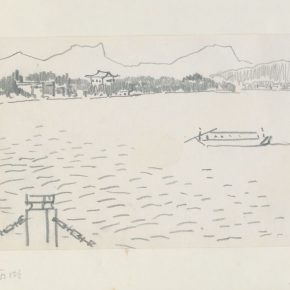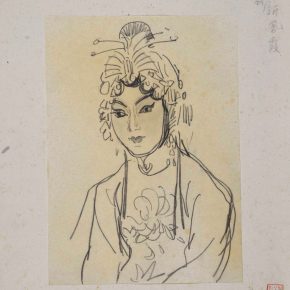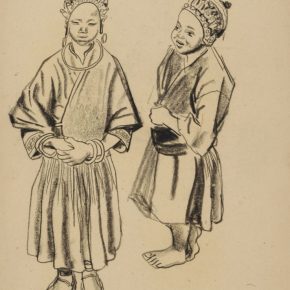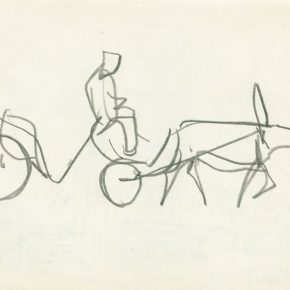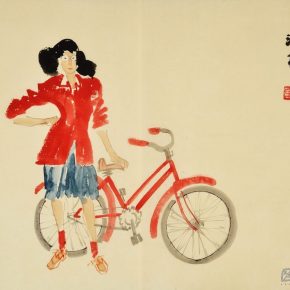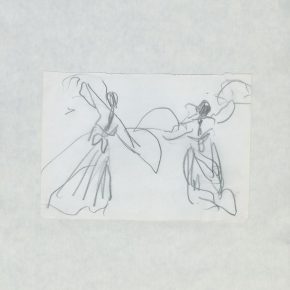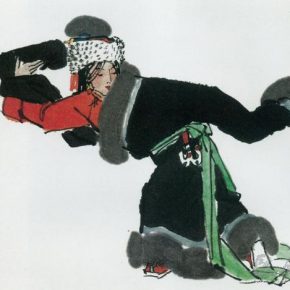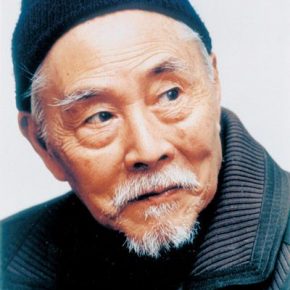Ye Qianyu
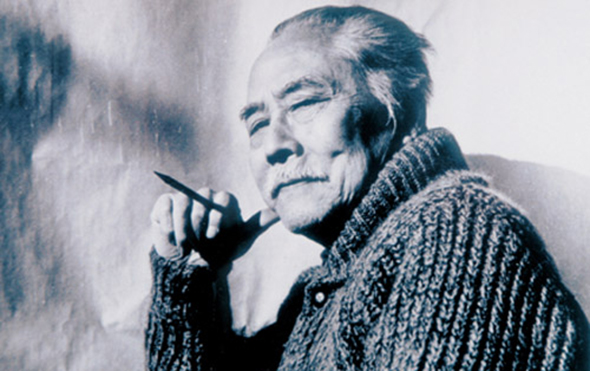
Born in Tonglu, Zhejiang Province, Ye Qianyu (1907-1995) was a renowned artist and art educator at home and abroad. Affected by family and folk art, he had a love for painting from childhood. Ye paid attention to the times and national destiny and living throughout his life, and drew these topics on paper. He gained fabulous achievements especially in comic art, Chinese painting and sketching. He was the forerunner of the modern Chinese comic. From 1927 to 1937, he was known for the comic serial entitled “Mr. Wang”. Starting from the 1940s, he used Chinese traditional ink painting to create figure paintings, and he was well-known for creating figures dancing, which created a new realm, a contribution to the innovation of Chinese painting. Sketching has run through almost all of his life. It is both suitable for his creation and creating his own style, vividly expressing a fresh life. In 1947, Ye Qianyu taught in the Beiping National Art School (now renamed the Central Academy of Fine Arts). Ye became the director and professor of the Department of Chinese Painting of the Central Academy of Fine Arts in 1954, and he was appointed as Vice President of the Institute for Chinese Painting in 1981. He was the former Vice Chairman of the China Artists Association, a member of the China Federation of Literary and Art Circles, a member of the National Committee of CPPCC. Ye Qianyu’s artistic purpose is self-improvement. He was a hardworking painter throughout his life, created numerous paintings and published dozens of portfolios and books. The masterpieces include “Dance in India”, “Xiahe Autumn”, “The Great Unity of the Entire Chinese Nation”, “Summer”, “The First Class Wool”, “Liberation of Beiping” and so on.
“Ye Qianyu’s art is divided into 3 parts, including comics, sketching and paintings of dancers. Ye Qianyu’s sketches were the leader in this field, and he always carried a sketchbook from the 1930s, and he mainly used pencil lines to sketch, and shifted to using ink and wash to correct the painting since “Swan Lake”, reducing the lines as much as possible, so he was called the “Master of Stroke-Minus”. In the 1940s, Ye Qianyu shifted from comics to Chinese painting. At the beginning, he created a series of paintings of Indian dance after he returned from India. With the use of the method of Dunhuang frescoes and Buddhist paintings, he drew Tianzhu dance (Indian dance) with thick colors, neat and smooth lines, which is like mural paintings. Xu Beihong reviewed these paintings and said that “Ye Qianyu’s paintings are of brisk technique of writing, perfectly portraying the key part of the figure moving, as what he had done while sketching.’ Zong Baihua commented on his paintings, stating that: ‘Ye Qianyu’s Indian dance is a combination of classical beauty and modern beauty.’”
– An excerpt from “Ye Qianyu: The Use of Art to Express the Pursuit of the Truth, Goodness and Beauty”
“Chinese figure painting has long been detached from real life, has been both restricted by the idea that emphasizes the social and cultural functions of painting, especially the meaning of moral education, and controlled by the developed techniques. Nowadays, the restriction of thought has long been broken, while the traditional aesthetic habits of expression are not easily dislocated. The problems to be solved by practice are inseparable from the innovation of technical methods, but we can’t separate innovation from the national tradition and establish a complete new thing, so that it is necessary to refine the image and skillfully imitate the original, revealing the classic elegance and the style of writing. It is easy to refine the image and skillfully imitate the original in life, but it is difficult to have the classic elegance and the style of writing. Of course, it is not the classic elegance in the times of Wen Zhengming, and the changeless style of writing. I believe that, modern Chinese figure painting will be full of life, and excellent brush and ink, which will advance shoulder to shoulder with landscape painting and flower-and-bird painting. It is not only satisfied with the themes revealing the reality, but also fully respects the national standard of formal beauty in innovation.
– An excerpt from “Ye Qianyu: The By-Talk of Ancient and Modern Figure Painting”, originally published in “Research on Literature and Art”, vol.2, 1982
“The evaluation of an artist does not only depend on his propensity to reflect the progressive content of life but also depends on the coordination of artistic means to accommodate the tendency.”
– An excerpt from “Ye Qianyu: ‘Situ Qiao’s Posthumous Work Exhibition”
“Recently, I proposed a plan to revise the teaching of the Department of Chinese Painting of the Central Academy of Fine Arts, stressing that the double-track system of drawing and traditional Chinese figure sketching must be ended, drawing should be abandoned, and the reasonable shaping elements of drawing should be integrated into the line drawing. In addition, for historical reasons, over the past two decades, it emphasized the direction of figure, excluding bird-and-flower painting, landscape painting, all are ignored, which has also depleted the technique of figure painting. I propose the freshmen of the Department of Chinese Painting should first learn flower-and-bird painting, landscape painting, before learning figure painting, in the next few years. We know that the flower-and-bird painting and landscapes are the richest and the perfectly developed subjects in the development of modern Chinese painting and have their own laws of formation. Starting from flower-and-bird painting and landscapes, it helps us to grasp the rules of Chinese painting and techniques of ink and brush, which does not only guarantee the development of flower-and-bird painting and landscapes, but also offers rich nutrition for figure painting.
– An excerpt from “Ye Qianyu: Opinions on the Training of the Shaping of Chinese Figure Paintings”, originally published in the “New Art”, vol.1, 1980




